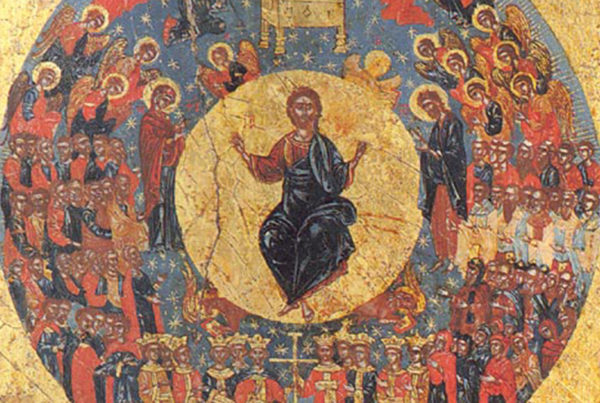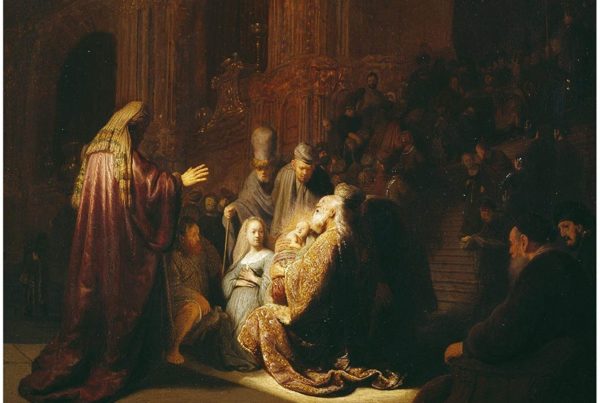[Note: this is the second in a series of posts working through Greg Boyd’s recently released Crucifixion of the Warrior God: Interpreting the Old Testament’s Violent Portraits of God in Light of the Cross. Go here for Post 1.)
The question I posed in the previous post summarizes the driving concern of Greg Boyd’s CWG: How can we at once affirm the God-breathed and revelatory nature of the Old Testament (OT) text while also affirming that the God revealed in the cross of Jesus Christ is the revelation that supersedes all others, especially when the pictures of God portrayed in each appear to be at odds?
For Boyd, too much historical interpretation of hard Old Testament texts proceeds in such a way that the Crucified Christ as the definitive revelation of God is diminished. That is, violent OT portraits of God are all too often placed alongside the cross as a sort of counterbalancing measure, and what we might call an “illegitimate appeal to mystery” takes place, which goes something like this: “Yes, we know that the Crucified Christ is the revelation of God that surpasses all others, and yet we also recognize that there are moments in the OT that seem to run contrary to that revelation. Since they are both revelation, we must simply accept this as ‘mystery’ and live in the tension.”
Boyd argues that this is a mistake. We must, he says, like Jacob, not simply accept the tension but wrestle through the tension to blessing, saying:
“I am convinced that it is only when we are fully convinced that the cross fully reveals God’s true character and that all Scripture is intended to bear witness to this supreme revelation that we will see that the problem posed by Scripture’s violent divine portraits is not something that can be resolved by putting the best possible ‘spin’ on them…I am convinced that it is only when our conviction about the supremacy of the revelation of God on Calvary causes us to abandon all attempts to defend the violent behavior ascribed to God in the OT that we can begin to see how these violent portraits actually bear witness to God’s true, cruciform character” (Vol 1, p36, emphasis mine).
That is, if Jesus is eternally what God has to say, his “Word” made flesh, then we should be able to discern him in all the God-breathed “words” of Scripture–even the difficult ones. That will be the focus of the work.
After spending the next several chapters arguing through Scripture for the centrality of the cross as the definitive revelation of God and surveying how the Church has grappled with this down through history vis a vis the Old Testament (excellent chapters in their own right), two foundational philosophical convictions regarding what he calls “The Cruciform Hermeneutic” come into focus. It is worth citing John Goldingay (whom Boyd quotes) here:
“Only because God continually took up the cross in an act of self-denial did God’s relationship with the world and with Israel continue. The cross on Golgotha was then the logical end term of the way God had been through the First Testament Story” (Goldingay 236-237 as quoted by Boyd, vol 1 p463).
In other words, if the cross is what Boyd has argued it is, then we should expect that the God-breathed record of God’s dealings with Israel have a discernible cruciform, self-denying, agape-driven character. What does that look like?
- God “breathes” his revelation both by “acting toward us” and, perhaps astonishingly, “allowing others to act towards him” (vol 2, p1250, emphasis mine). This is what we see in the cross of Jesus. God honors personhood, “and because he therefore works by means of the influential power of the cross (1 Cor 1:18) rather than by utilizing coercive power, God’s ‘breathing’ is a dialectical rather than a unilateral process” (ibid., emphasis mine). For Boyd, that means that the testimony itself will reflect both divine and human (and therefore culturally conditioned and fallen) elements. Which means that…
- We must “read Scripture expecting that there will be times when, to one degree or another, the revelatory content of a portrait of God is to be found not on its surface, which everyone can understand by straightforward exegesis, but in its depth, where we by faith discern the humble, loving condescension of our heavenly missionary (God)” (vol 2, p1251, emphasis mine). Once again, this is what we see in the cross. A “surface reading” of the cross sees only an apparently guilty, godforsaken criminal. But with the eyes of faith we are able to discern beyond the “surface” of the cross to the depth, where we see the fathomless love of a God who would stoop to become his own “antithesis”, a “curse” on our behalf, to save us.
The effort of Boyd’s work from here on out will be teasing out the four principles that he believes derive from these two foundational convictions–that the written testimony of Scripture itself bears a “dialectical” rather than unilateral character, and that when faith peers beneath the surface to the depth, the cruciform character of God becomes apparent.
Next post: The Principle of Cruciform Accommodation


